_We may earn revenue from the products available on this page and participate in affiliate programs. Learn more ›
_
In December 2021, I made the decision to move from New York to Colorado. The reason for my venture west was simple: I wanted better access to bigger mountains where I could chase elk
, trout
, ducks
, and upland birds
. So, I gave myself six months to get my things in order, find a place to live, and be ready to hit the ground running for summer trout fishing and my first hunting season out west. But the first order of business—buying a truck.
Leading up to the new year, I did my research, talked to friends in the industry, and wrote down what I wanted to get out of a vehicle—off-road capabilities, a mid-size build, durability, longevity, and an excellent reputation for minimal maintenance. I wanted something I could take deep into the backcountry without worrying if I’d make it back out. So, that January, I purchased a brand new 2022 Toyota Tacoma TRD Off-Road
pickup truck.
Shortly after I got the keys, I started down the road of turning my new Taco into the ultimate hunting and fishing rig. There were things I wanted to get done right away, like doubling my bed space with a cap and adding a storage system to organize my gear. Once I got to Colorado and started exploring the Rocky Mountains, more ideas started to pop into my head—some small and some big.
But one thing remained consistent: Every addition I make to my truck serves a specific purpose to improve my hunting and fishing adventures. Now, just over two years later, my Tacoma looks very different from when I drove it off the lot in New York. Building this rig has been a long process, and this story will serve as the ongoing blueprint for my build.
I should make one thing clear before we dive into the nuts and bolts. You don’t need a fancy truck and accessories to have incredible hunting and fishing adventures. I just happen to be a gear junkie, and I love the process of tailoring/accessorizing my truck to help get me further into the mountains to hunt and fish. Here is a breakdown of my 2022 Toyota Tacoma and every accessory, addition, and part that helps me on my hunting and fishing trips.
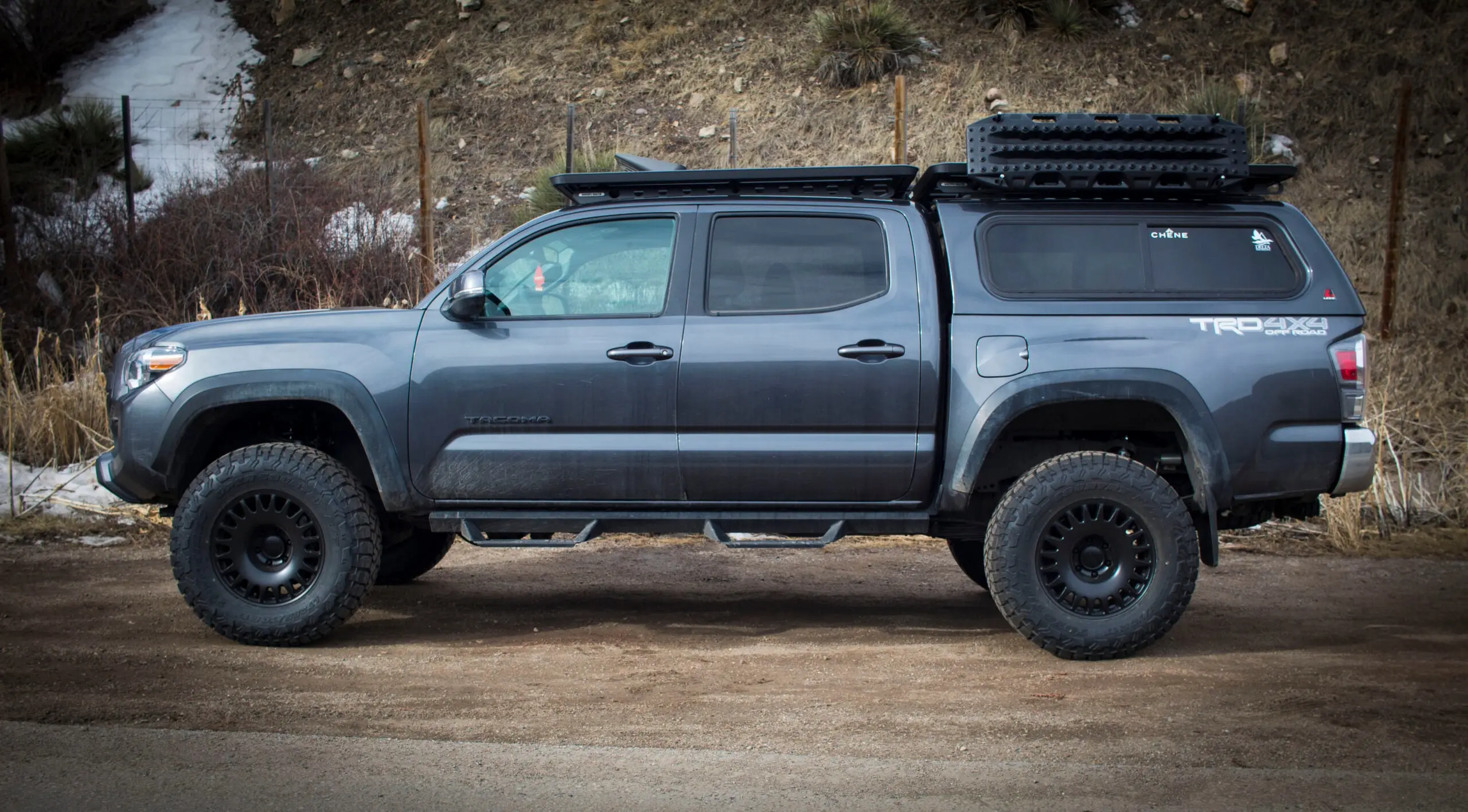
The most up-to-date version of the author’s Toyota Tacoma TRD Off-Road. Ryan Chelius
2022 Toyota Tacoma Off-Road Base Specs
Year: 2022
Make & Model: Toyota Tacoma
Trim: Off-Road
Cab: Double Cab
Bed: 5-foot
Engine: V6
Tires: Goodyear 265s
The Purpose of My Truck Build
The short answer is hunting and fishing—plain and simple. As I mentioned above, every accessory or part on my truck serves a purpose to improve my trips. So, how did I decide what to add? Some additions were just practical, like a rod vault and running boards. But most of the big additions—like installing a lift kit and a roof rack—came from not getting to where I wanted to or being unable to transport specific equipment.
I had light bulb moments where I thought, “If I were to add this part or that accessory, then I’d be able to do a bit more.” That “more” often resulted in reaching places I couldn’t previously access and, in turn, led to more success in the field.
The workshop and testing grounds for my Tacoma build range from the East Coast to the Rocky Mountains. I’ve taken my Taco on backcountry elk hunts, late-season mule deer hunts, beat-up off-road trails, and endless waterfowl hunting trips. I’ve driven it thousands of miles exploring western trout rivers, as well as across most of the country. It’s trailered duck boats, carried canoes, and taken me up roads I didn’t think I could get through. This truck is a workhorse.
I’ve added accessories that didn’t hold up to the task and then replaced them with better options. Getting my Taco to where it is today took a lot of trial and error, research, and tweaking. Below is a look at the most up-to-date version of my Tacoma—built specifically with the Total Outdoorsman in mind.

From top clockwise: The author and two fishing buddies at a high alpine stream in the Rockies; Author’s Toyota Tacoma parked in the backcountry of the Rockies on an elk hunt; Drying out waders at trout camp after a day on the river. Ryan Chelius
Lift Kit and Suspension
For the first year and a half of owning my truck, I didn’t have any added suspension. My clearance was the same as any TRD off-road that comes from the factory. This was fine for most of my adventures until I started exploring high-country alpine lakes and rocky trails in the backcountry. I knew a lift kit would increase my range, access, and confidence on backcountry hunts. So, earlier this winter, I got in touch with Runnin4Tacos
in Denver, Colorado, to talk suspension systems.
Runnin4Tacos is a Toyota off-road specialty shop. They focus on upgrades, like suspension, wiring, and racks, as well as general maintenance, like wheels and tires, alignment, oil changes, timing belt replacement, water pump replacement, and more. Being 20 minutes from my home, it was a no-brainer to use Runnin4Tacos. I worked closely with Andrew at the shop, and he walked me through all the parts needed to get what I wanted out of a lift—utility and practicality. Once I got the list of parts, I reached out to the manufacturers, who were all excited to contribute to the build.
Below is a list of all the parts that went into my suspension build:
Bilstein 6112 Front Suspension Kit
Bilstein 5160 Rear Shock Absorber
SPC Adjustable Upper Control Arms
Deaver Expedition Series Leaf Springs
DuroBumps Rear and Front Bump Stops
Bilstein 6112 Front Suspension Kit
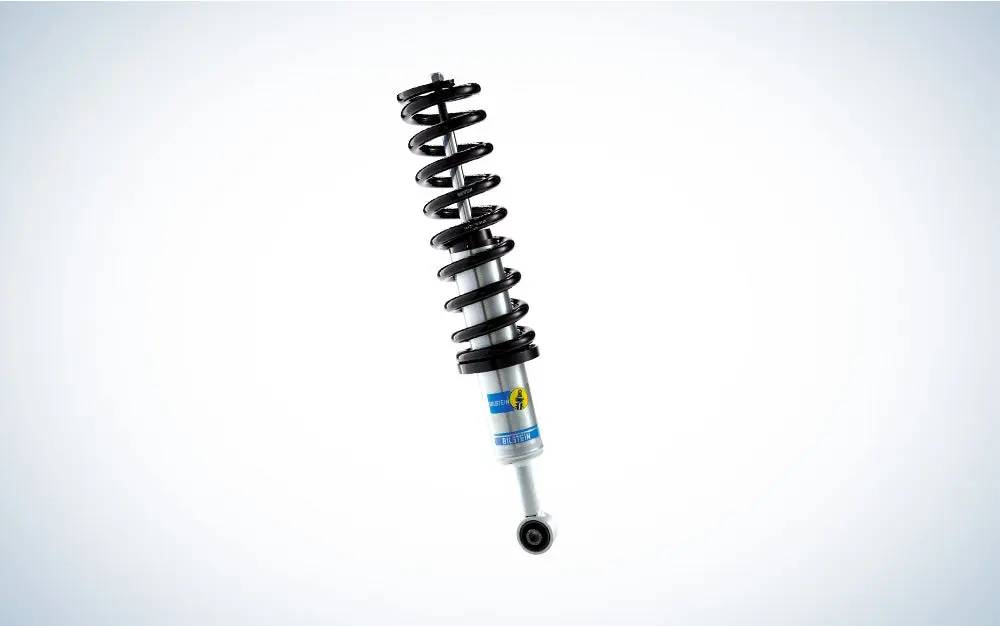
The foundation of my 2.5-inch lift is the Bilstein 6112 front suspension kit. The design and purpose of this leveling kit is simple—increase ground clearance and allow for larger tires. This kit also comes with an adjustable spring seat, allowing for a front lift of anywhere from 0 to 2.75 inches. After talking with the Bilstein guys, it was clear that the 6112s were perfect for my build due to their practical design. The kit offers the off-road suspension I want without sacrificing on-road performance. This is mostly due to the 60mm digressive piston that optimizes the driving experience. I haven’t noticed any on-road driving difference and now I can take my truck places I couldn’t last year. It’s perfect for the truck owner who wants the performance of a lifted vehicle without looking like a monster truck.
Bilstein 5160 Rear Shock Absorber
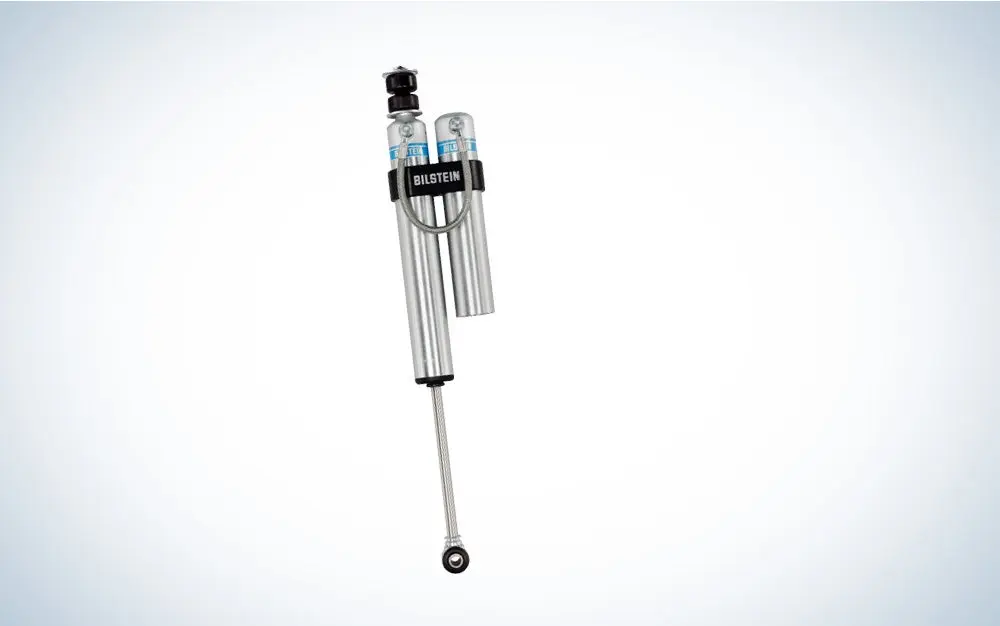
Bilstein’s 5160s are the perfect match for the 6112 suspension kit. If you read Bilstein’s website and other dealers’ descriptions, you’ll see these labeled as remote reservoir shock absorbers with excellent cooling capacity. What that really means is that these shocks are going to offer great control and stability on the toughest off-road conditions with the ability to last a very long time. These shocks are going to make your rig tougher and more durable when you need it the most.
The 5160s come with a monotube design that ensures consistent, fade-free performance. They also have 360-degree swivel banjo hose fitting, providing a clean, low-profile installation. That fancy terminology is nice, but how do they perform off-road? Excellent. I have felt extremely stable and in control on my initial off-road test. These shocks have worked out perfectly with the lift kit in handling roads I wouldn’t have previously taken my Taco down.
SPC Adjustable Upper Control Arms

The team at Runnin4Tacos recommended two different control arms for me to choose from. I opted for the SPC upper control arms mainly because they’re less noisy on the road. That alone was enough to make my decision, as I wanted to get as close to factory ride performance as possible—and after weeks with the new rig, I can say these arms make for a pretty quiet ride.
Besides minimal noise, the control arms are adjustable and designed to correct alignment angles and get vehicles with oversized tires to perform closer to factory ride quality. They improve suspension travel, handling, and tire wear while maximizing clearance. These arms are designed, engineered, and tested at the SPC headquarters in Colorado and are made from the company’s forged steel design that increases strength and durability for off-roading.
Deaver Expedition Series Leaf Springs

Excellent leaf springs offer support to the vehicle while also absorbing bumps and making for an overall smoother ride. That’s exactly what Deaver’s Expedition Series Leaf Springs does for my Tacoma. Deaver manufactures these leaf units from high-grade American-made steel. This helps make a higher leaf count (9-leaf or 10-leaf units), translating into a more flexible leaf stack that produces a smoother spring rate curve. In English, that means the truck is going to handle tough roads better and result in a much smoother overall ride. There is more fancy terminology that I could list here, but it basically all boils down to this: the Deaver Expedition Series Leaf Springs are made from high-grade materials that help improve the overall ride, suspension, and durability of my Tacoma—which is really the only thing that matters.
DuroBumps Rear and Front Bump Stops
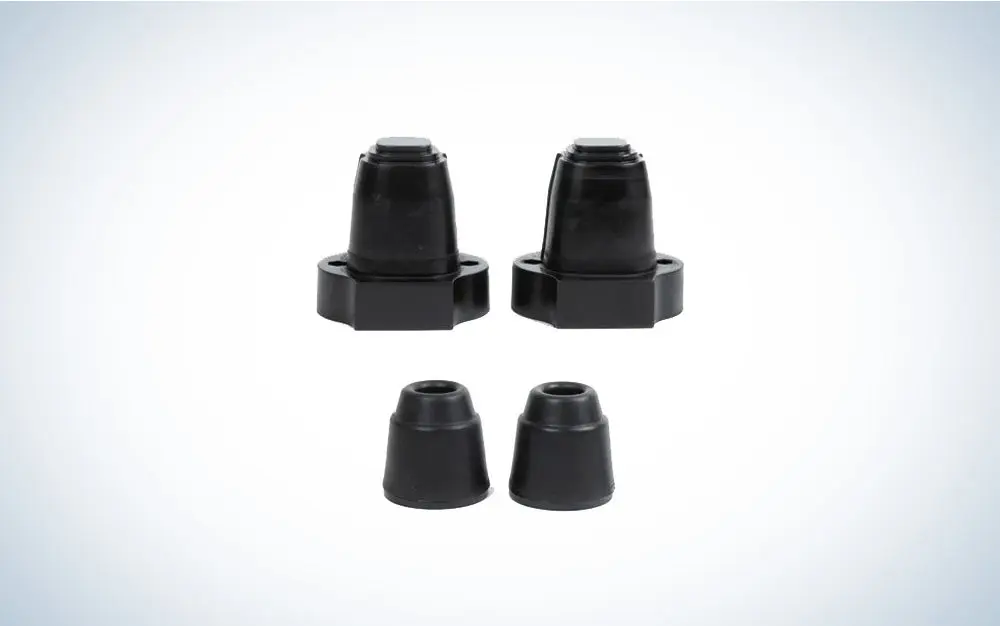
When it comes to off-road suspension, bump stops are critical to reduce damage from bottoming out. Runnin4Tacos suggested I use DuroBumps for both my rear and front bump stops. These can be mounted on virtually any leaf pack and offer smooth initial contact before becoming progressively firmer as compression continues. These bump stops are also application-specific, meaning they are fit for particular vehicles and suspensions. Like many of the other parts in my build, the bump stops play an important role in overall control, ride performance, and off-road comfort.
Right out of the gate, I feel more confident in handling many of the off-road trails that I turned around on last hunting season due to bottoming out. Now, even if I do bottom out, I know that these bump stops are going to protect my truck and increase the overall durability of my rig. I like to think of the DuroBumps as the last line of defense in protecting my truck’s shocks and other important suspension components. And it’s a bonus that the last line of defense is made right here in the USA.
Wheels and Tires
The idea of adding a lift kit came last fall when my factory tires started to wear out earlier than expected. I was slipping on snowy trails during hunting season, so I decided it was time for an upgrade. The result was moving from Goodyear 265s to Toyo 285s. I’ll get more into the benefits of these great tires below, but I thought while I was at it, I might as well put the new tires on some new wheels. That’s when Nomad came into the picture.
Of course, an upgrade to bigger tires meant I needed to add suspension to get the proper clearance, which is what you just read above. After the lift, I had enough clearance for the final two foundational pieces of my Tacoma off-road build—tires and wheels.
Nomad 503 Sahara Wheels
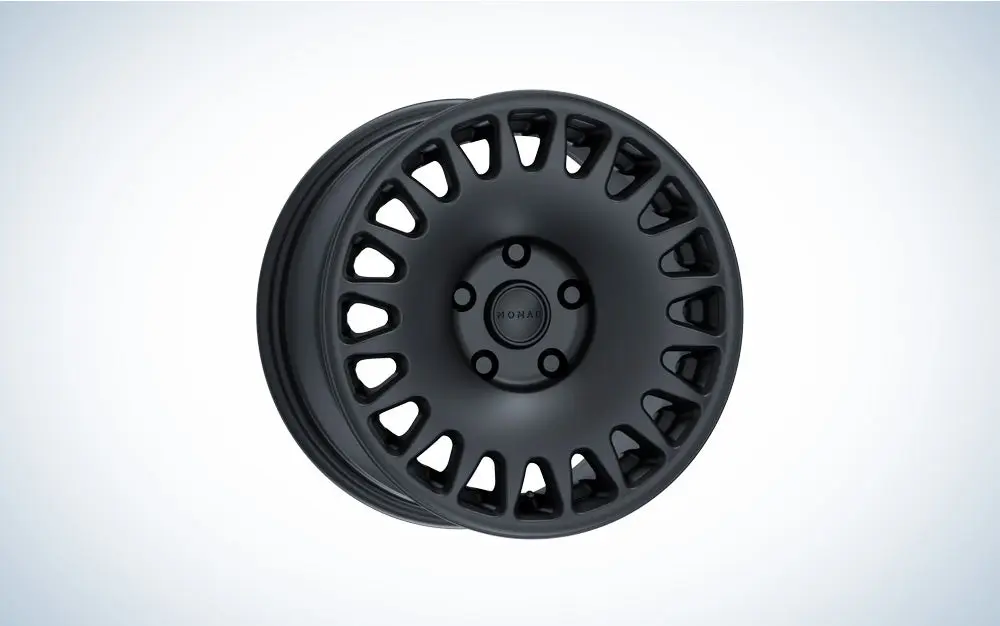
To be honest, I landed on the Nomad 503 Sahara wheels just as much for the slick looks as for the performance. After all, off-road wheels should look as good as the truck performs—and these do. As far as the wheel’s construction is concerned, they are made from A356-T6 aluminum, which is extremely durable and lightweight. I got the 17-inch 503 Sahara’s in satin black, but the wheels are available in 16- to 18-inch diameters and come in copperhead and dusk finish.
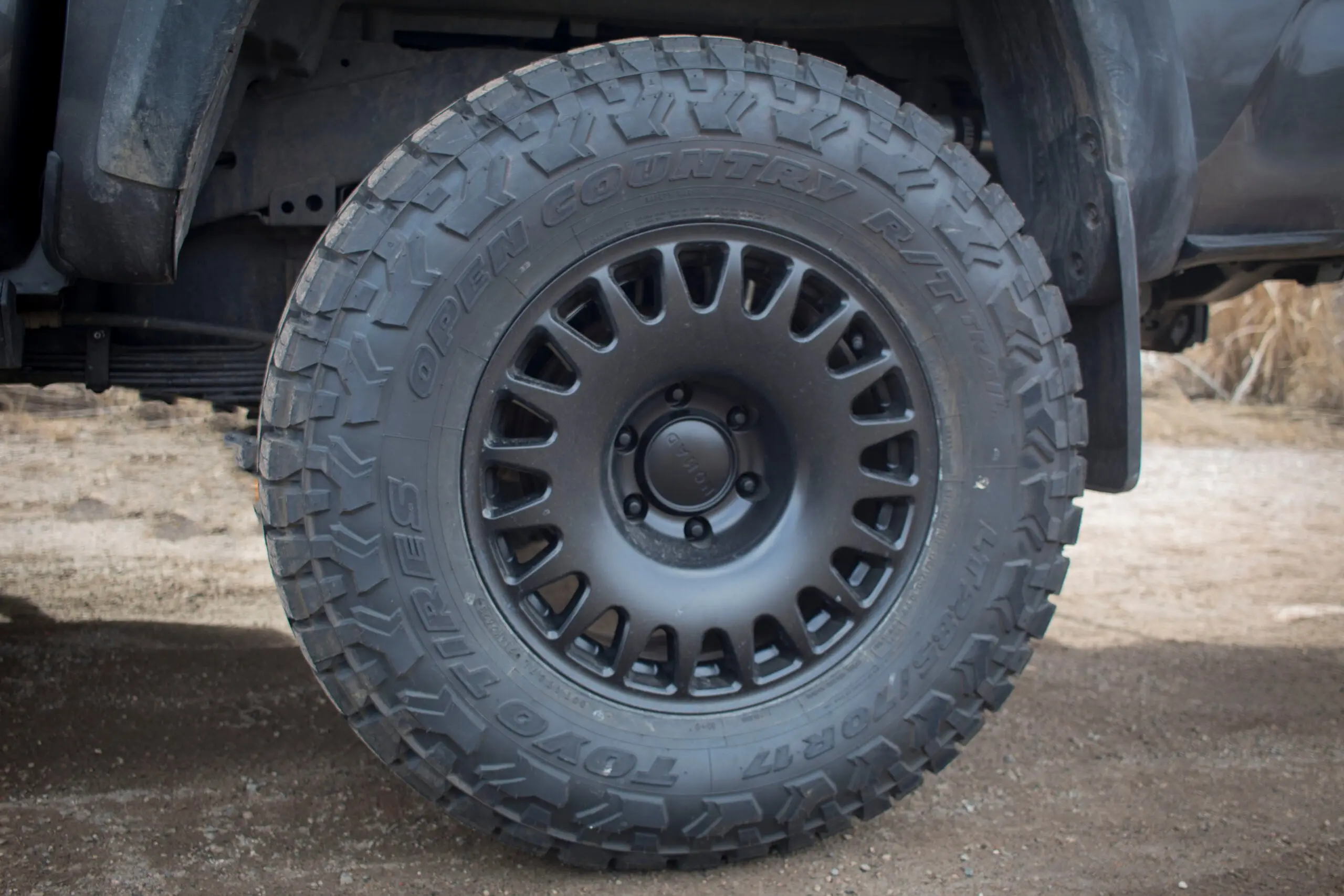
The Toyo Open Country All Terrain III tires on Nomad wheels. Ryan Chelius
Toyo Open Country A/T III Tires
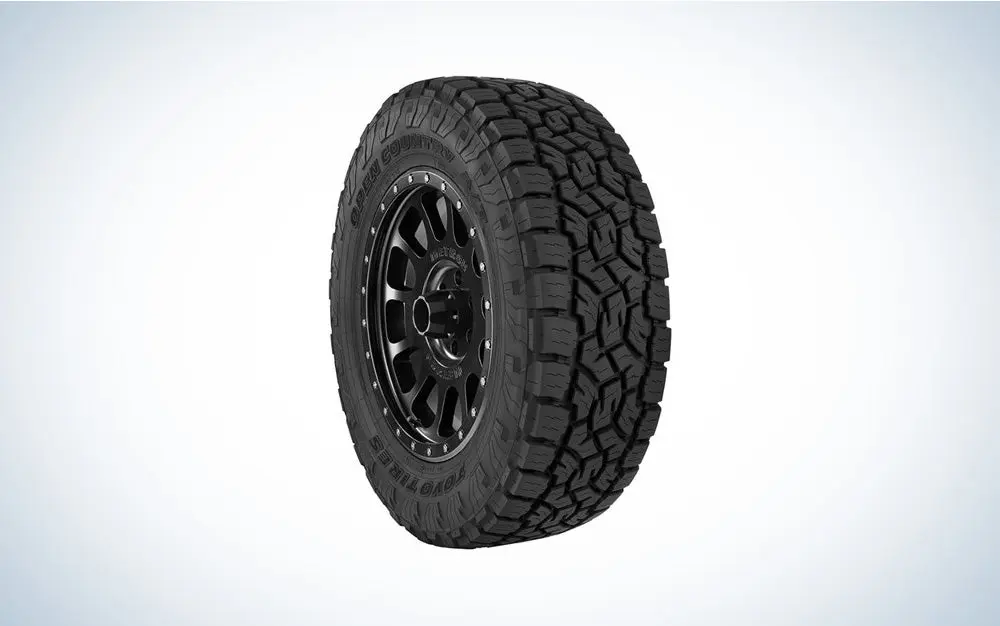
After my factory tires started to lose traction at 30,000 miles, I started looking for tires that could do a better job on off-road situations without sacrificing on-road performance. After talking with folks in the industry, I was put in touch with Toyo and the team there recommended using their Open Country All-Terrain III tires. I opted for 285s and they have handled everything I’ve thrown at them.
What I like most about these tires is they perform just as well on-road as they do off-road. I was worried about increased noise, but it hasn’t been a problem. Toyo focused their attention on wet performance, durability, and treadwear life. While I can’t speak too much on the latter two, I can say these tires have performed exceptionally well in rain and snow. The 285s are the perfect setup for my lifted Tacoma, and I am confident these tires will last the full 65,000-mile warranty.
Roof Rack
A couple of months after I got my truck, I installed two crossbars onto the cap. At the time, I only needed the crossbars to carry my rod vaults, and it did the job just fine. Then, during hunting season, I discovered a honey hole filled with ducks. The only issue was that the best way to access it was by canoe—and I had no easy way of transporting my 15-foot Old Town to the river. Then, the Rhino-Rack team reached out.
Originally, Rhino Rack got in touch with me about recovery tracks (read more on these below), but our conversation quickly changed to talking about a full roof rack to transport my canoe for hunting trips. They recommended the Pioneer Platform for the roof of my cab and cap. The end result was amazing, and the very next day, I strapped on my canoe and shot a limit of ducks. Here is a closer look at the pioneer rack and some other Rhino-Rack accessories I added to my Taco.
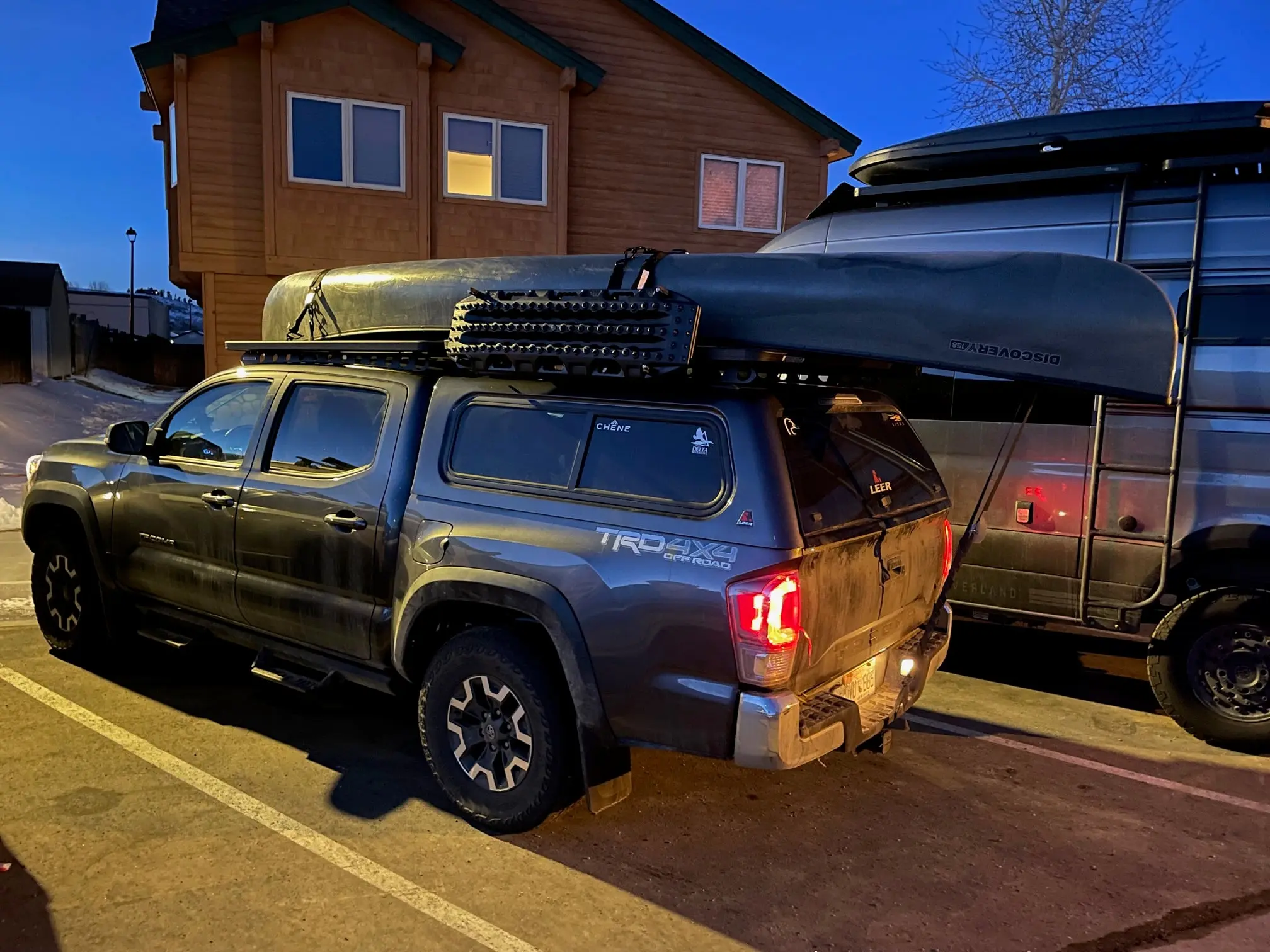
The author with his duck hunting canoe on top of the pioneer roof rack. Ryan Chelius
What Is On The Roof of My Truck?
Pioneer Platform with Rhino-Rack Backbone
(on cab and cap)
Pioneer Platform with Rhino-Rack Backbone
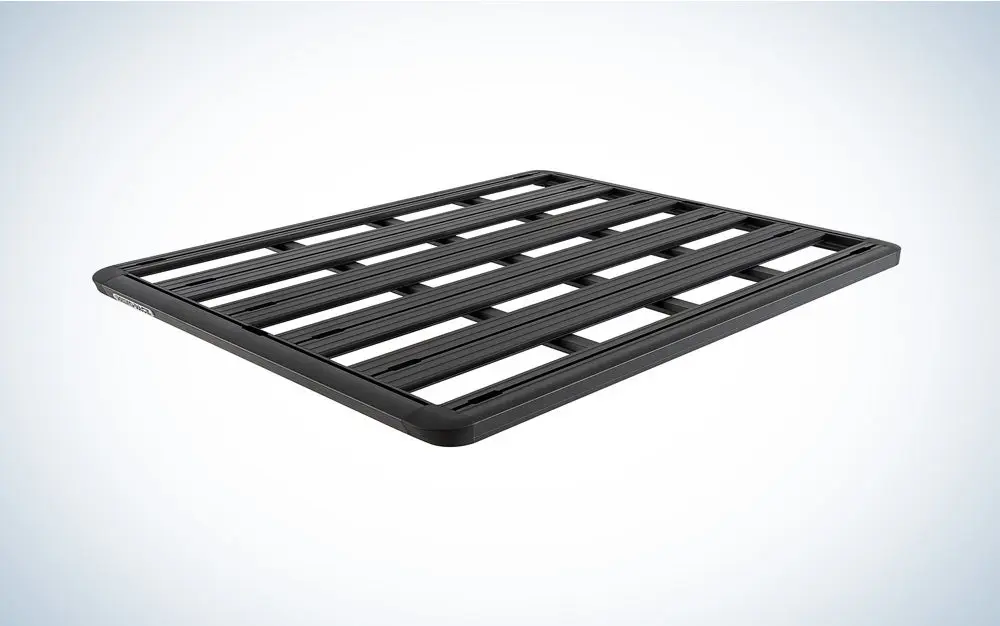
The foundation of my roof rack is two Rhino-Rack Pioneer Platforms—one for the cab and one for the cap. These two durable platforms combine to make one long rooftop rack that runs across the entire top of my truck. They are made from strong, lightweight aluminum with fiberglass-reinforced nylon corners. Rhino-Rack designed this platform with multiple accessory channels, including in the front and rear crossbars. These accessory channels pair nicely with almost all Rhino-Rack accessories, and the platform layout makes it easy to strap anything down to the roof.
Now that we’ve got the nuts and bolts out of the way, let me tell you how I use the Pioneer Platforms. Like I mentioned earlier, the reason I wanted the platforms for to carry my 15-foot canoe so I could access the best duck hunting spots and kill more ducks. And that’s exactly what I did. I’m able to slide my boat right on top of the platforms and securely strap them down with two hold-down straps. I also tie off the bow and stern of the canoe (see pictures below). The canoe never moved an inch, even in blistering cold, ice, and snow. My Pioneer Rack costs around $1,355 and comes with a 5-year warranty.
Sunseeker Awning
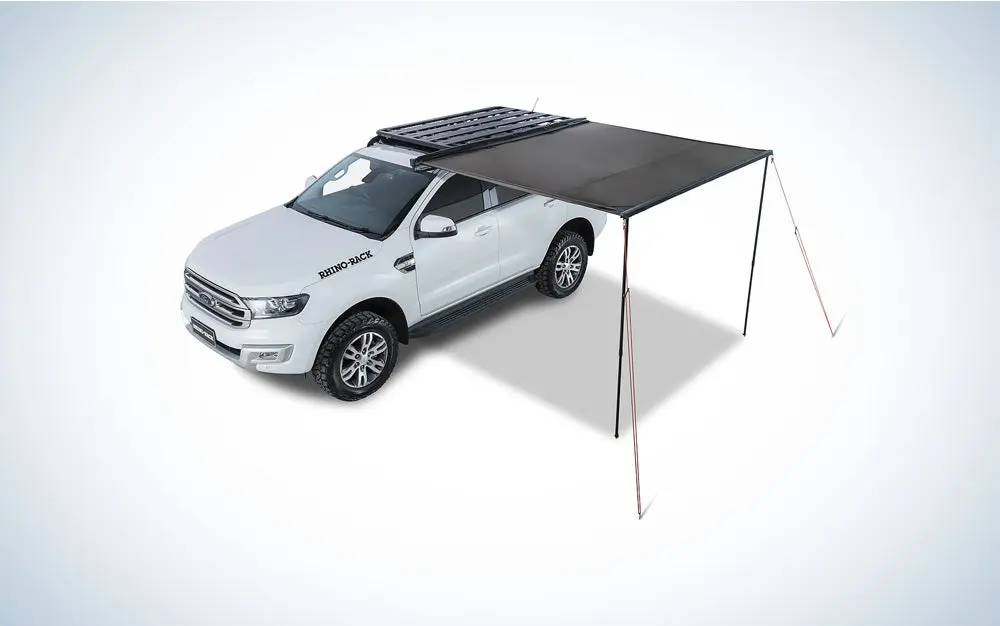
While I haven’t got much use out of the Sunseeker Awning yet, I know it is going to come in handy during camping and fishing trips this summer. It mounts to my Pioneer Rack and hangs off the passenger side. When in use, it rolls out an 8.2-foot awning that provides 55.38 square feet of shaded cover. It is worth noting that the rack and awning together increase noise on the road, but it isn’t too bad. This awing is perfect for beach days, sports games, and camping trips, but if you’re like me, you’ll use it to celebrate and relax after a good day of catching fish.
MaxTrax Recovery Boards
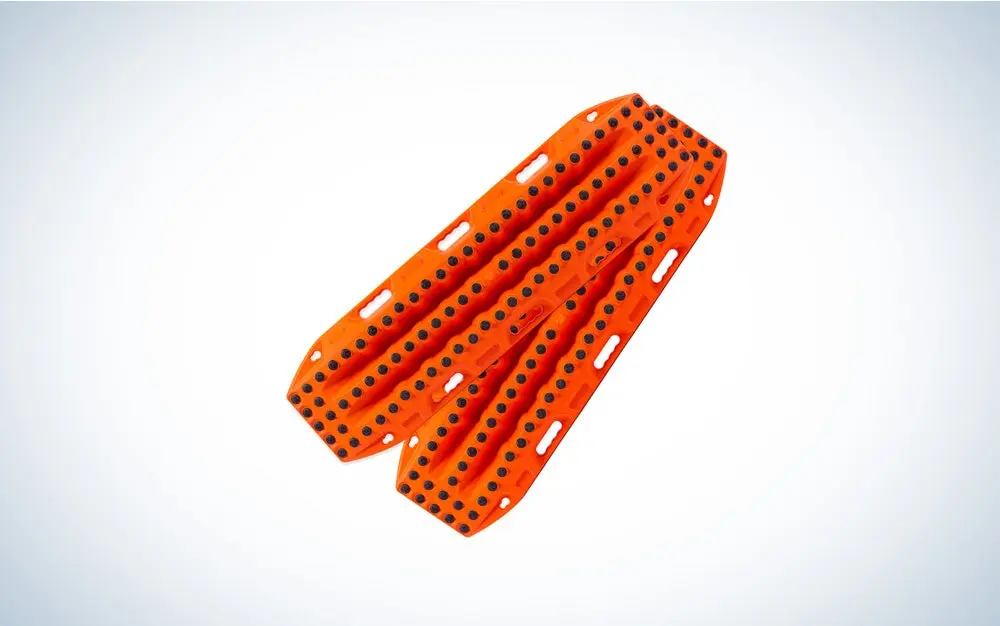
It is better to be safe than sorry. That’s why I added two MaxTrax recovery boards to my rig. I haven’t had to use them yet, but given the areas I hunt and fish in, there’s a good chance I will need them at one point or another. I’ve had some close calls in deep snow and mud, but now I feel confident that if I ever get stuck, I can get my truck out. I recommend buying at least two if you find yourself off-roading on washed-out and muddy roads.
Large STOWiT
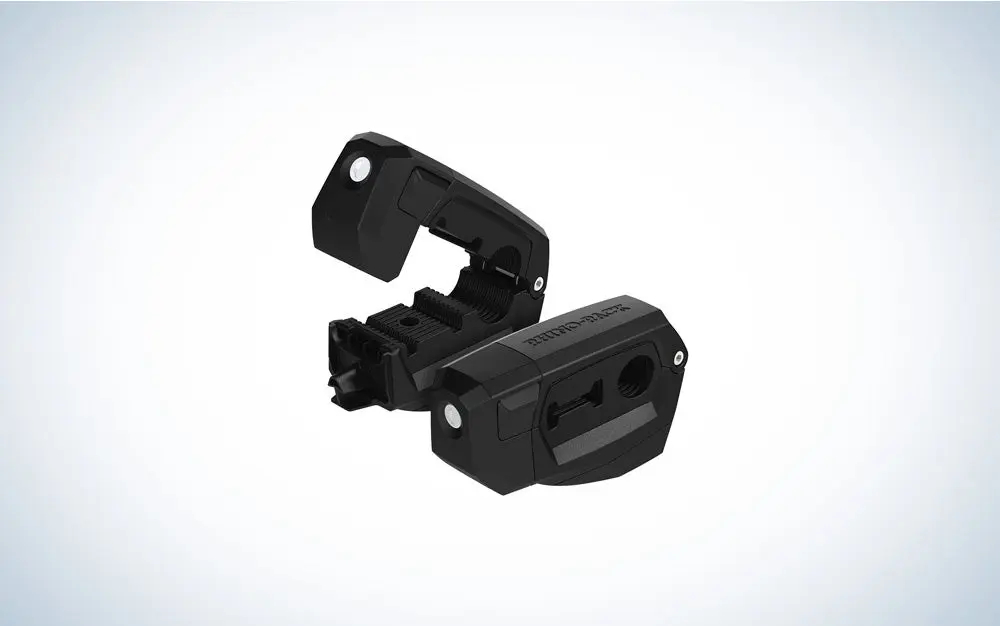
I wasn’t sure about the Stow It until I installed it on my roof rack after hunting season. This simple accessory is perfect for locking small pieces of gear like a shovel, axe, or fishing rod. Plus, it is super easy to take and off. I’ve got a shovel inside mine right now, but will most likely switch it out for an axe this summer. The large Stow It can be had for $305.

The author with his truck after a successful duck hunt. Ryan Chelius
Leer 100XR Truck Cap
Adding a cap to the bed of my truck was the first addition I made over two years ago when I bought my Tacoma. I wanted to double the space in my bed, so I installed the Leer 100XR cap. It hasn’t given me any problems so far, and I would highly recommend this model. If you have a mid-sized truck like me and transport a lot of gear, you should consider adding a cap. It has a glass rear door, an interior 12V LED light, tinted glass, an insulated roof, glass door props, and more. Contact a local dealer about installation.
![Field & Stream [dev]](https://images.ctfassets.net/fbkgl98xrr9f/1GnddAVcyeew2hQvUmrFpw/e4ca91baa53a1ecd66f76b1ef472932b/mob-logo.svg)

